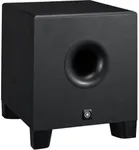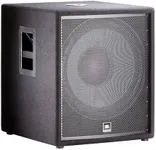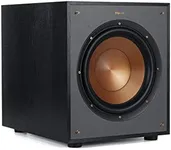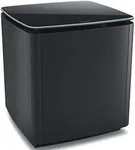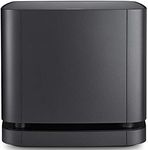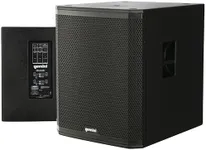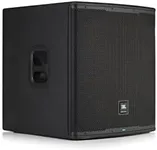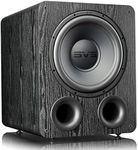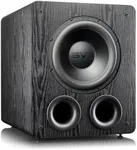Buying Guide for the Best Subwoofer Speakers
Choosing the right subwoofer speakers can significantly enhance your audio experience, whether you're setting up a home theater system, upgrading your car audio, or just looking to enjoy music with deeper bass. The key is to understand the various specifications and how they align with your specific needs and preferences. Here are the main specs to consider when selecting subwoofer speakers and how to navigate them.Power Handling (RMS and Peak)Power handling indicates how much power a subwoofer can handle without being damaged. RMS (Root Mean Square) refers to the continuous power a subwoofer can handle, while Peak power refers to the maximum power it can handle in short bursts. Higher RMS values mean the subwoofer can handle more power consistently, which is important for sustained performance. If you enjoy loud, powerful bass, look for higher RMS ratings. For casual listening, a lower RMS rating may suffice.
Frequency ResponseFrequency response measures the range of frequencies a subwoofer can reproduce, typically indicated in Hertz (Hz). A wider frequency range means the subwoofer can produce both very low and relatively higher bass sounds. For deep, rumbling bass, look for subwoofers with a lower minimum frequency (e.g., 20 Hz). If you prefer a more balanced sound that includes mid-bass, a subwoofer with a broader range might be better.
SensitivitySensitivity, measured in decibels (dB), indicates how efficiently a subwoofer converts power into sound. Higher sensitivity means the subwoofer can produce more sound with less power. If you have a lower-powered amplifier, a subwoofer with higher sensitivity (e.g., 90 dB or above) will be more efficient and produce better sound. For high-powered systems, sensitivity is less critical but still contributes to overall performance.
ImpedanceImpedance, measured in ohms, refers to the electrical resistance of the subwoofer. Common values are 2, 4, and 8 ohms. Lower impedance subwoofers (e.g., 2 ohms) can draw more power from the amplifier, potentially producing louder sound, but they require compatible amplifiers. Higher impedance subwoofers (e.g., 8 ohms) are easier to drive and can be more compatible with a wider range of amplifiers. Choose impedance based on your amplifier's specifications and compatibility.
Enclosure TypeThe type of enclosure (box) a subwoofer is housed in affects its sound quality. Sealed enclosures provide tight, accurate bass and are generally more compact. Ported (vented) enclosures offer louder, boomier bass but are larger. Bandpass enclosures are a combination, providing very loud bass within a specific frequency range. Choose a sealed enclosure for precise bass, a ported enclosure for louder bass, and a bandpass enclosure if you want a mix of both.
SizeSubwoofers come in various sizes, typically ranging from 8 inches to 15 inches or more. Larger subwoofers (e.g., 12 inches and above) can produce deeper and louder bass, but they require more space and power. Smaller subwoofers (e.g., 8-10 inches) are more compact and easier to install but may not produce as much low-end bass. Consider the size of your room or vehicle and your bass preferences when choosing the size of your subwoofer.
Voice CoilsSubwoofers can have single or dual voice coils. Dual voice coil (DVC) subwoofers offer more wiring flexibility and can be configured to different impedance levels, making them versatile for various setups. Single voice coil (SVC) subwoofers are simpler to install but offer less flexibility. If you plan to customize your audio setup or need specific impedance matching, DVC subwoofers are a good choice. For straightforward installations, SVC subwoofers are sufficient.
